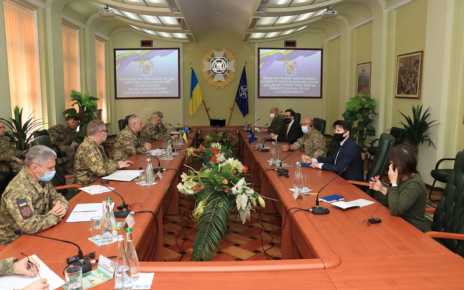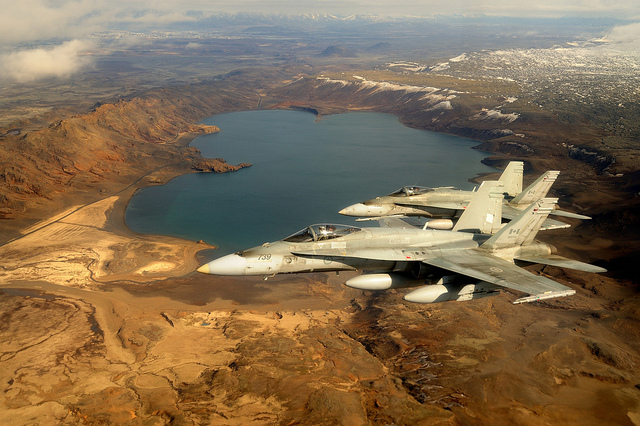In July 2011, the Canadian Forces completed their decade long combat deployment in Afghanistan as part of the NATO-led International Security Assistance Force. While the Government of Canada has kept 950 individuals in Kabul on board as advisors for Afghan army training personnel, one must wonder what lies on the horizon for the Canadian Armed Forces.
Historically, Canada has been eager to involve its troops in UN sanctioned missions, especially if they fall under the umbrella of NATO. One expects future governments to have a similar NATO-oriented policy, but with the conclusion of the deployment in Afghanistan, the Canadian Forces (CF) are currently in somewhat of a standstill, being overhauled for future missions. One wonders what these operations might actually be.
A useful tool then, is the military’s planned hardware acquisitions. Naturally, one can never be sure of systems being used for what they were intended, especially when the armed forces have shown great competence in re-adapting already existing platforms. However, hardware development is still indicative of expected threats, and by extension, expected missions.
[captionpix align=”left” theme=”elegant” width=”320″ imgsrc=”http://natoassociation.ca/wp-content/uploads/2012/11/n-decade-warnumbers26DC1.jpg” captiontext=”Canadian troops patrolling near a suspected Taliban village.”]
The increased focus on the individual soldier as the unit of choice as opposed to larger divisions is indicative of lessons learned fighting an insurgency in Afghanistan. The ISSP implies a directional change in the way counter-insurgency is employed. ISAF forces face a major issue in Afghanistan as a result of the large number of soldiers deployed. Coalition troops present themselves as a sizeable target, since the army is still divided into combat units that are only useful in a more industrial war. Thus, the number of troops in any given area may be disproportionate to its needs. It makes a deployment expensive in the monetary sense, but also in human loss since insurgents now have a bigger target.
These large traditional deployments are also ineffective since they are too concentrated for the threat they are attempting to manage.By nature, insurgents are dispersed, and this feature allows them to defeat stronger military opponents. The hierarchical nature of the armed forces excels at seeking out and destroying a designated enemy force, but what if the enemy is less a force and more an influence as T. E. Lawrence aptly described? At this point, traditional military structures become too restrictive to allow the freedom of movement necessary to strike frequently against an insurgency. The ISSP would inspire the CF’s ability to act in non-traditional structures.
A similar trend as the one mentioned above can be found in the Army’s improvements to their Family of Land Combat Vehicles. The Light Armoured Vehicle III (LAV-III) is rightly referred to as the workhorse in the Canadian Army since it is the most commonly used Canadian armoured personnel carrier in Afghanistan. While the LAV-III provided Canadian troops with good mobility, the vehicle required significant armour improvements in order to respond to potential IED threats.
[captionpix align=”right” theme=”elegant” width=”320″ imgsrc=”http://natoassociation.ca/wp-content/uploads/2012/11/canadian_laviii.jpg” captiontext=”Canadian LAV-III on patrol in Afghanistan.”]
However, the conflict in Afghanistan demonstrated that frontlines do not exist in an insurgency. Troop transports are constantly at risk because IEDs may be placed anywhere and attacks can happen at any time. As stated, this differs from the traditional concept of warfare since in traditional warfare landmines are expected to be clustered along the frontline to halt the enemy advance, instead in Afghanistan they are placed everywhere to maximize damage.
Thus, the specific improvements made to the LAV-III as well as the planned acquisitions of up-armoured vehicle concepts such as the Close Combat Vehicle, and the Tactical Armoured Patrol Vehicle, denote a change in strategy. While the effectiveness of offensive actions remains to be seen, defensively the Canadian Armed Forces seem to be responding to the idea of an “area of threat” as opposed to a frontline.
While the CF will still be deployed under a NATO mandate, the military acquisition programs imply a new direction for the armed forces. They are ready to fight in a conflict where the enemy is not designated by location, but rather by action. History demonstrates that insurgents will always have the initiative over intervening forces that operate under traditional theories of warfare. The changes currently implemented by the CF don’t necessarily imply likelihood of participating in such conflicts in the future, but they certainly imply the willingness to win them.




